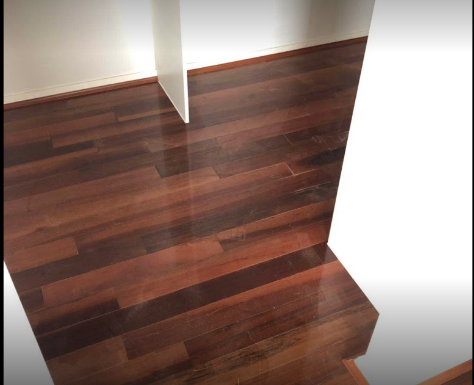Laminate may be popular synthetic flooring and a standard choice for homeowners. Laminate installation is far like producing an outsized puzzle and will take time for the installation.
This guide explains everything you would like to understand about the way to install the laminate flooring on any surface, information to seem for when hiring knowledgeable, and the way to DIY the project. Homeowners also are instructed on the preparation steps required before beginning.
Firstly, we should know about what different tools and materials required for this quick DIY which is as listed below.
Tools Required
- 4-in-1 screwdriver
- Air compressor
- Air hose
- Brad nail gun
- Caulk gun
- Drill bit set
- Drill/driver – cordless
- Hammer
- Handsaw
- 10.Jigsaw
- saw
- set
- glasses
- 14.Straightedge
- measure
- knife
- chisel
Materials Required
- 4-mil plastic
- 4d finish nails
- Construction adhesive
- Duct tape
- Floor pad tape
- Flooring pad
- Masking tape
- Snap-together wood flooring
- Transition pieces
Ready to get started? Follow these simple steps to learn how to install laminate flooring in a snap!
Preparing the floor
Besides, if you are laying flooring over a concrete slab or another moisture-prone surface, the flooring manufacturer may recommend installing some sort of moisture or vapor barrier to guard the flooring against moisture. Some sorts of underlayment’s are designed to purpose a moisture barrier. Otherwise, you will install thick plastic sheeting and seal the seams with tape to supply a moisture barrier. Typically, this goes below the underlayment.
Use the acclimation time to unpack the planks and inspect the merchandise. Your planks will acclimate to humidity and temperature to avoid gaps or buckling in your flooring later.
Look for defects like chipping, splitting, warping or broken tongues and grooves. It’s always safer to order 5 to 10% quite your required square footage to account for damaged boards, waste, and spares for future repairs.
Before beginning installation, remove all baseboards and trim around the perimeter of the space also as any heating resisters or air return duct covers mounted within the floor. Thoroughly sweep and/or vacuum the whole floor.
Now it is time to start out installing!
Prepare the project area
Remove your baseboards and pull up your carpet (if you have got it). Take care when tearing out tack strips with sharp nails around the perimeter of the space. Your subfloor must be smooth and flat so that once you lay your laminate flooring, it is often flush without bending or “slapping” once you beat it. If there are perceptible dips or depressions, use a leveling compound to urge your floor level.
Prepare the subfloors
Before you begin your installation, free your space from obstructions like staples, nails, dust, and debris. Throughout your removal and installation, wearing knee protection also will avoid any aches and pains later. For a floating floor (a floor that does not get to be nailed or glued like laminate flooring), any height difference should not be above 1 / 4 inch moreover any eight-foot span of the floor.
Install the underlayment
This is a necessary step when installing any sort of flooring because it helps absorb noise and smooth any subfloor imperfections. Some laminate flooring has underlayment pads pre-attached for convenience.
A foam underlayment can work as a moisture barrier to stop cupping, gapping, and squeaking thanks to expansion. Remove the sticky tape strip on the side (most underlayment’s should have it) and press it right down to secure it in situ on the ground.
Get ready to install, choose starting wall
Carefully inspect all of your planks in bright light throughout the installation trying to find any defects. Also, throughout the installation, choose planks from quite one package at a time. This may even out color variation and avoid too many lights or dark planks next to every other.
It is better to lay them in the same direction. For square rooms lay the boards in the direction of incoming light. Starting at the longest wall, add spacers against the wall to make a little gap that permits expansion and contraction.
Trim the first row. So many installation guides on the web forget to say the importance of creating sure you trim the primary and last row of planks so that they are going to be an equivalent width. this manner you avoid the terrible squeezed in look which may easily happen if you have not measured right from the beginning and therefore the last row finishes up being just a few centimeters wide.
You ought to measure the width of the space then you will calculate what proportion you would like to trim evenly off the primary and last row.
Use a saw (preferably a buzz saw, or miter saw) and trim the primary row. Confirm you trim the tongue side and not the groove side because the groove side should be the side facing bent the space once you lay the primary row.
Lay the first row. Now the boards for the primary row are once moved size you will begin piecing together the primary two rows. Do that about two feet far away from the starting wall from the left to the proper.
Place the first boards against the spacers. Each laminate flooring plank features a tongue and groove that fit together and “float” above the underlayment. Stagger them a minimum of 12 in. at a time. It is vital to make a solid foundation of rows to start all flooring installations. Usually comprised of 4 rows, these foundation rows bring a solid and secure workspace for the remainder of planks to stay too.
Custom cuts. If you encounter barriers like door frames, vents, or cabinets, each will require different techniques and tools to deal with. Straight cuts around cabinets are often managed by chop saws. However, cuts around pipers required a jigsaw.
Install the final row. With one final row to travel, measure the space between the wall and therefore the last row, minus the expansion gap. Now you recognize the width needed for the ultimate row. When marking the cut line on your plank, it is vital to not measure from the tongue. Cut the plank along the road and, if needed, insert the last row with a pull bar.
The final step attaches the baseboards. The last step is to connect the baseboards to the wall, “Not” the ground. Molding should never be attached to the laminate floor because the flooring still must expand and contract and will not be ready to do this if an enormous nail or wood glue is holding it in the area. So, for baseboards simply move size with a jigsaw and nail to nail the wall.
Laminate flooring are available at wholesale rates in Sydney with Glorious Flooring. Find out more about the variations, grade, and price. Contact us!



